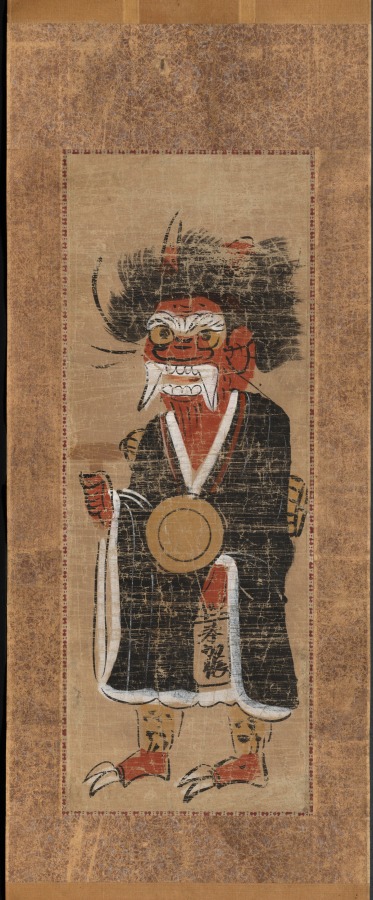| schema:description 9 | "tombstone: Demon Intoning the Name of the Buddha (Oni no nenbutsu), 1700s. Japan, Edo period (1615-1868). Hanging scroll, ink and color on paper; painting only: 59.2 x 22.1 cm (23 5/16 x 8 11/16 in.); including mounting: 126.4 x 33 cm (49 3/4 x 13 in.). The Cleveland Museum of Art, Purchase from the J. H. Wade Fund 1982.26...(more)" |
| schema:description | "creditline: Purchase from the J. H. Wade Fund" |
| schema:description | "id: 150855" |
| schema:description | "technique: hanging scroll, ink and color on paper" |
| schema:description | "type: Painting" |
| schema:description | "culture: Japan, Edo period (1615-1868)" |
| schema:description | "measurements: Painting only: 59.2 x 22.1 cm (23 5/16 x 8 11/16 in.); Including mounting: 126.4 x 33 cm (49 3/4 x 13 in.)" |
| schema:description | "collection: ASIAN - Hanging scroll" |
| schema:description | "wall_description: Images like this one that depicts a demon in the guise of an itinerant monk intoning the name of the Buddha are called Otsu-e, or "Otsu paintings." Otsu-e were made as souvenirs for travelers
passing through the station of Otsu along the Tokaido, the route stretching from Edo (modern-day Tokyo) to Kyoto. Realized through a combination of woodblock printing, rapid brushstrokes, embellishment with color and gold pigments by stencil or by hand, the earliest Otsu-e, produced in the 17th century, were Buddhist and Shinto icons. Later images included figures popular from kabuki plays, as well as scenes illustrating parables....(more)" |

